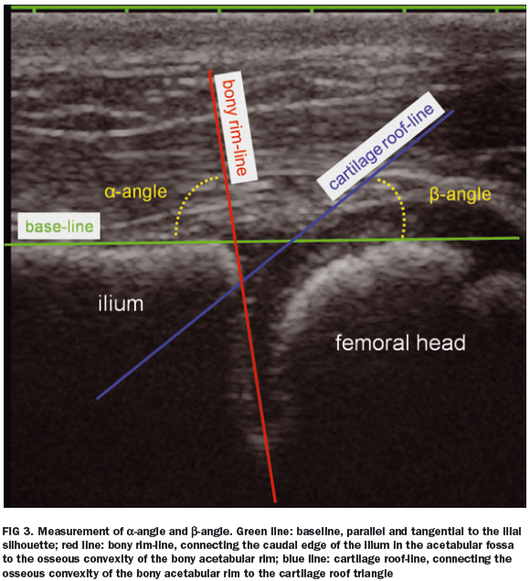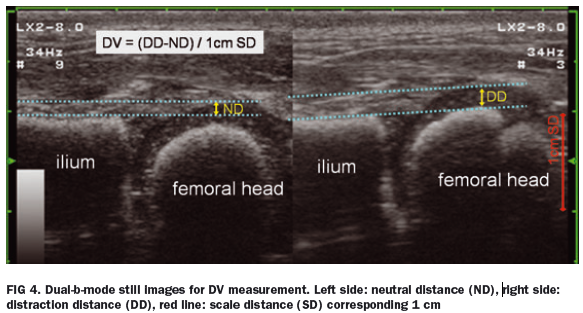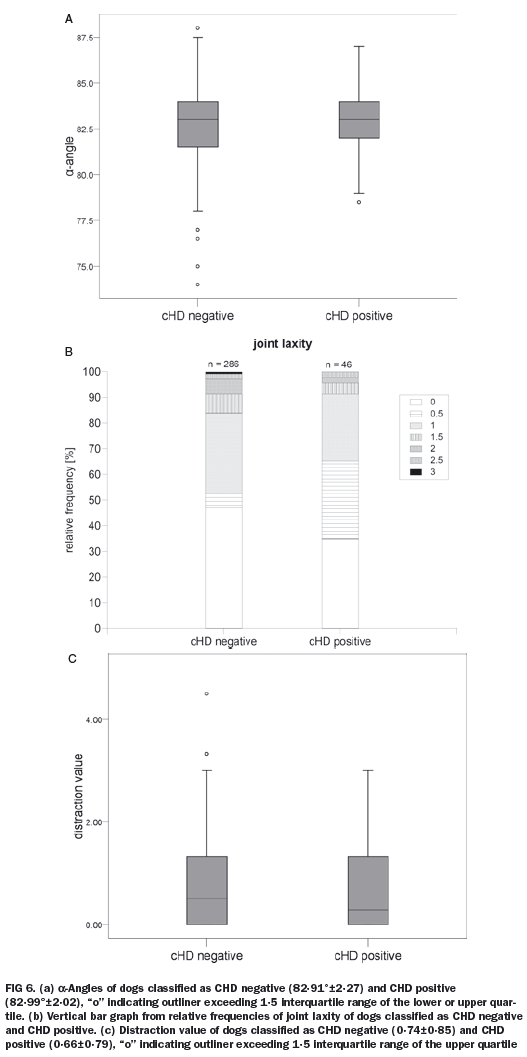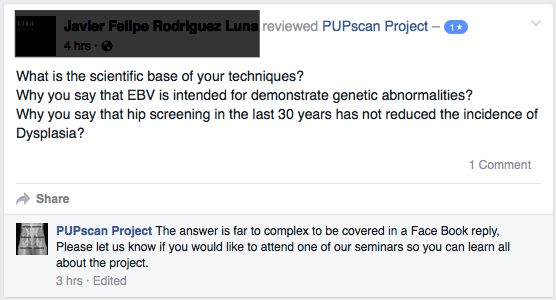- What "measurements" are taken?
- What evidence is there that whatever you are scoring is predictive of the development of hip dysplasia?
- What value is there in imaging a cartilagenous joint that is yet to be formed?
- What is the basis for your claim to be assessing "congenital genetic dysplasia"?
Their results:
"...No statistical significant correlation could be found between sonographical determinations of α-angle, joint laxity, DV and conventional radiographic hip joint classification at the age of 12 to 24 months...None of the
parameters assessed by ultrasonography in puppies could ultimately be linked to adult CHD. Results of our study suggest that static and dynamic ultrasonography of hip joints in puppies between 16 and 49 days of age is technically feasible but cannot be recommended for detecting puppies that will develop CHD between the ages of 12 and 24 months."
- What is the basis for your claim to be assessing "congenital genetic dysplasia"?
PUPscan claims to be able to distinguish "genetic" dysplasia from dysplasia resulting from trauma or damage. In fact, as Riser et al (1985) explain, the hips of all puppies are anatomically normal at birth, and hip dysplasia is the consequence of abnormal stresses on the structures of the hip that result from laxity in the joint. That is, there is no "genetic" hip dysplasia in which genes are responsible for misshaping of the hip during post-natal development. Rather, hip dysplasia is in fact the result of trauma and damage because of abnormal biomechanics. He notes that genetics does play a role in the body conformation of a dog (e.g., size, weight, muscle development), and these features are related to breed-specific differences in the prevalence of hip dysplasia, with large, heavy dogs being at highest risk. From this,
A published, peer-reviewed study failed to find any evidence that ultrasound examination of young puppies was predictive of the development of hip dysplasia as adults.
Finally, this post appeared on the PUPscan Facebook page today:
REFERENCES
Fischer A, A Flock, B Tellhelm, K Failing, M Kramer, & C Thiel. 2010. Static and dynamic ultrasonography for the early diagnosis of canine hip dysplasia. Journal of Small Animal Practice 51: 582-588. DOI: 10.1111/j.1748-5827.2010.00995.x.
Riser WH, WH Rhodes, & CD Newton. 1985. Hip dysplasia. Ch 83 in Textbook of Small Animal Orthopedics, CD Newton, Ed. Lippencott Williams & Wilkins.
Check out
ICB's online courses
*******************
Join our Facebook Group
ICB Breeding for the Future
...the science of dog breeding
*******************
Visit our Facebook Page
ICB Institute of Canine Biology
...the latest canine news and research





